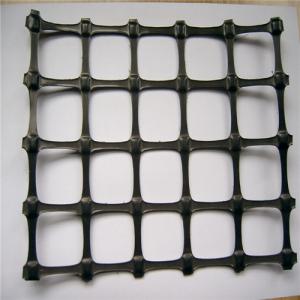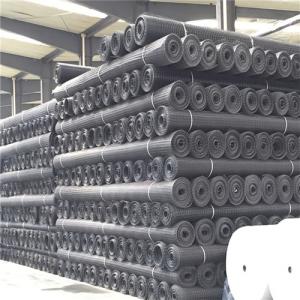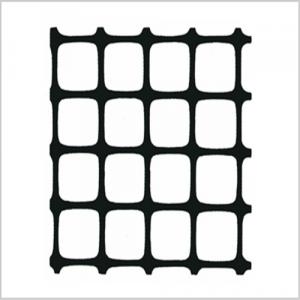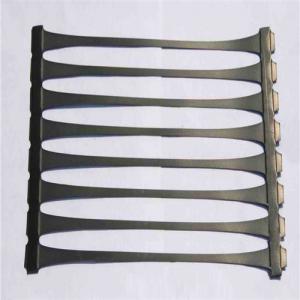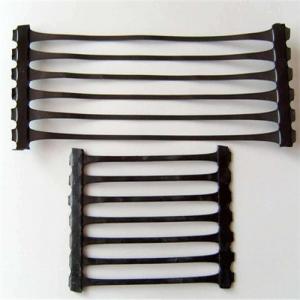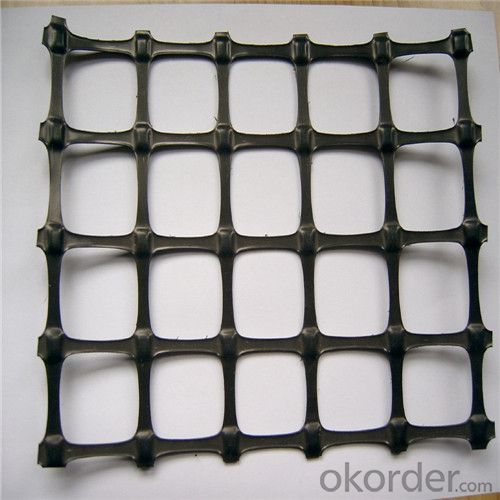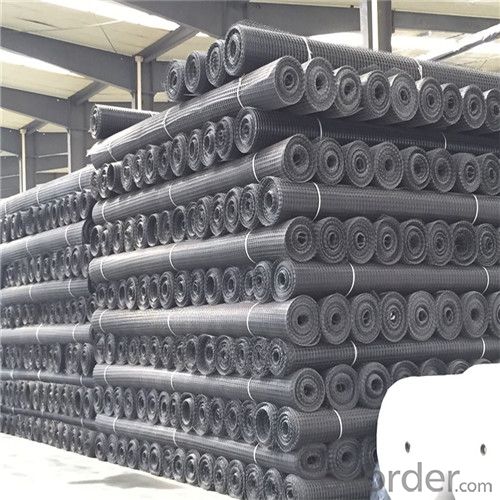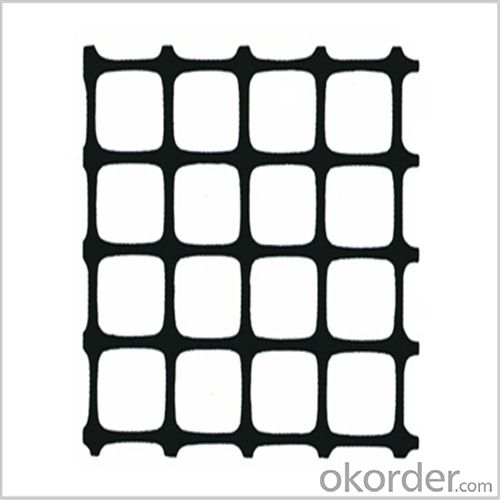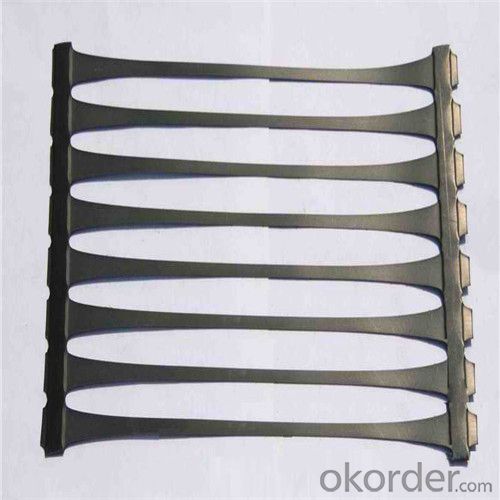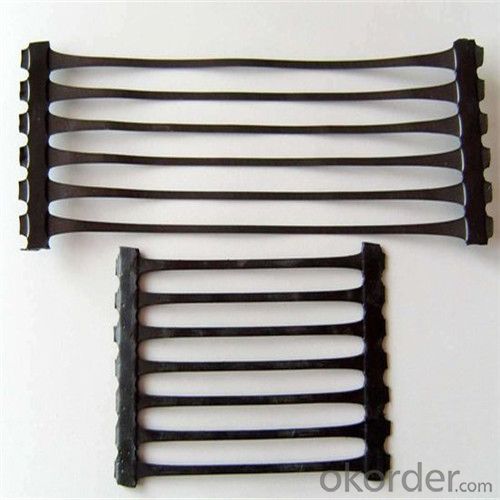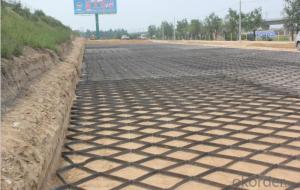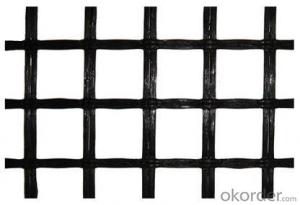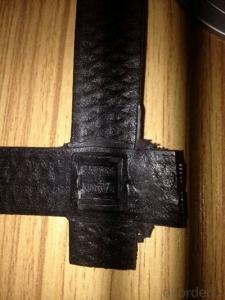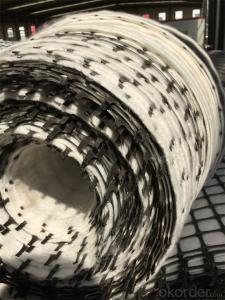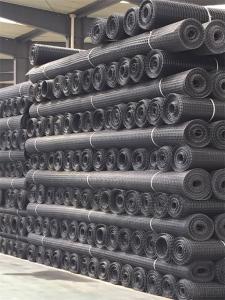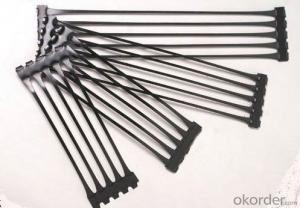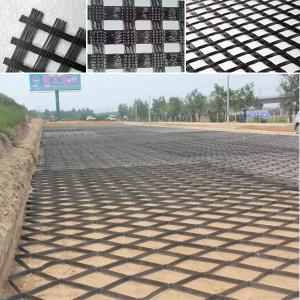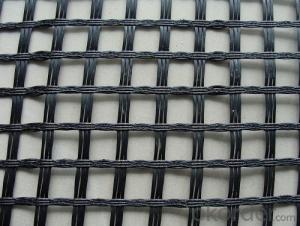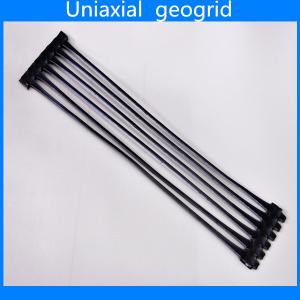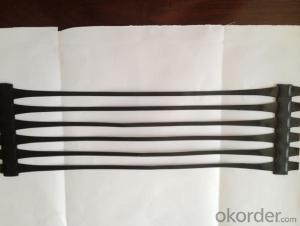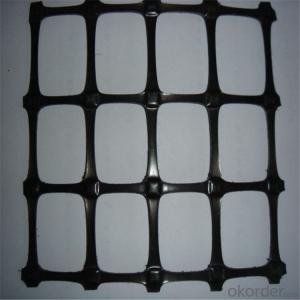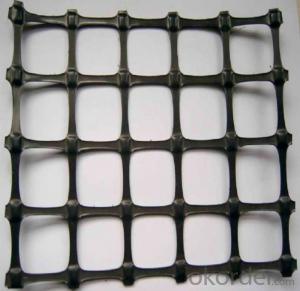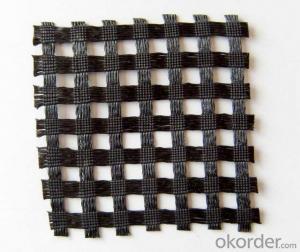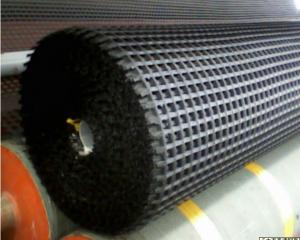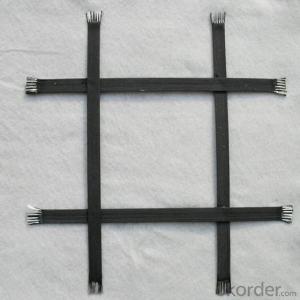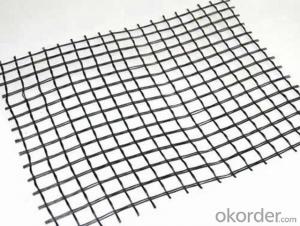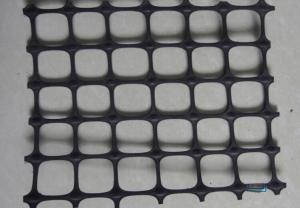PP Biaxial/Unixial Geogrid Reinforcement
- Loading Port:
- Tianjin
- Payment Terms:
- TT or LC
- Min Order Qty:
- 500 m²
- Supply Capability:
- 100000 m²/month
OKorder Service Pledge
OKorder Financial Service
You Might Also Like
PP geogrid Description
PP geogrid is manufactured from polypropylene. It is produced through the process of extruding, punching, heating, longitudinal stretching and transverse stretching.
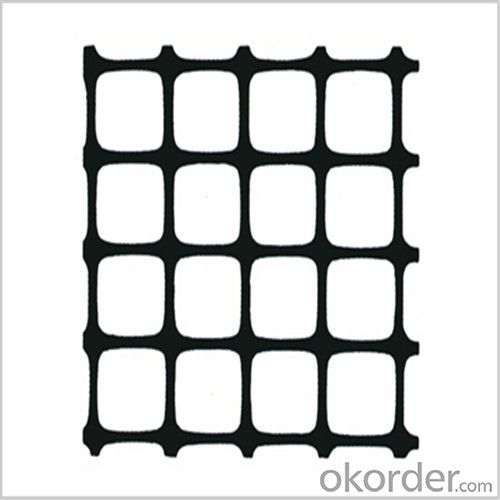
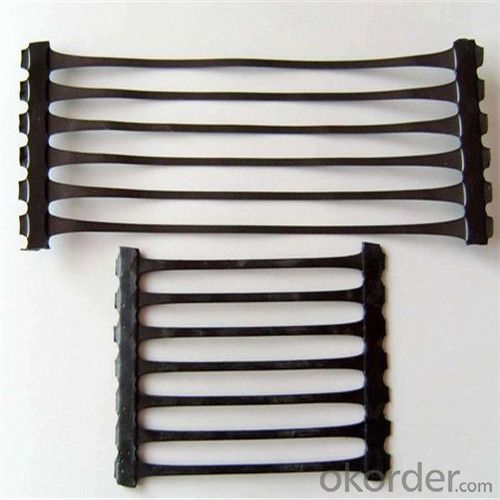
PP geogrid Specification
Tensile Strength: 15KN-15KN, 40KN-40KN, 50KN-50KN, etc
Roll Size: 3.95x100m, 2x50m, as request.
Index Properties | Test Method | Unit | GG1515 | GG2020 | GG3030 | GG4040 |
MD TD | MD TD | MD TD | MD TD | |||
Polymer | -- | -- | PP | PP | PP | PP |
Minimum Carbon Black | ASTM D 4218 | % | 2 | 2 | 2 | 2 |
Tensile Strength@ 2% Strain | ASTM D 6637 | Kn/m | 5 5 | 7 7 | 10.5 10.5 | 14 14 |
Tensile Strength@ 5% Strain | ASTM D 6637 | Kn/m | 7 7 | 14 14 | 21 21 | 28 28 |
Ultimate Tensile Strength | ASTM D 6637 | Kn/m | 15 15 | 20 20 | 30 30 | 40 40 |
Strain @ Ultimate Strength | ASTM D 6637 | % | 13 10 | 13 10 | 13 10 | 13 10 |
Structural Integrity | ||||||
Junction Efficiency | GRI GG2 | % | 93 | 93 | 93 | 93 |
Flexural Rigidity | ASTM D 1388 | Mg-cm | 700000 | 1000000 | 3500000 | 10000000 |
Aperture Stability | COE Method | mm-N/deg | 646 | 707 | 1432 | 2104 |
Dimensions | ||||||
Roll Width | -- | M | 3.95 | 3.95 | 3.95 | 3.95 |
Roll Length | -- | M | 50 | 50 | 50 | 50 |
Roll Weight | -- | Kg | 39 | 50 | 72 | 105 |
MD denotes Machine direction. TD denotes transverse direction. | ||||||
PP geogrid Property
1) Not easy to produce static after friction.
2) Good flame retardant performance.
3) Strong anti-corrosion and rust resistance.
4) High bearing capacity, low elongation.
PP geogrid Application
1) Coal mine channel.
2) Slope protection in tunnel and expressway.
3) Anti-seismic reinforcement of buildings.
FAQ
Q:Can you provide a sample for us?
A:Yes,We can send free samples,but customer need to pay the freight.
Q:What is your minimum order quantity?
A:The minimum order is negotiable.
Q:What is your payment terms?
A: T/T or L/C
Q: What is your delivery time?
A:Production time usually cost 7-15 days.
Q: Why we choose you?
We have up to 15 years experience of geogrid manufacture. best quality of product is guaranteed!
- Q: Can geogrids be used for reinforcement in railway track construction?
- Yes, geogrids can be used for reinforcement in railway track construction. Geogrids provide additional support and stability to the track, helping to distribute loads and prevent settlement or deformation of the track structure. They are particularly effective in stabilizing the subgrade and improving the overall performance and longevity of the railway track.
- Q: Are there any limitations or drawbacks of using geogrids?
- Yes, there are some limitations and drawbacks of using geogrids. One limitation is that geogrids can be relatively expensive compared to other soil stabilization methods. Additionally, the installation process of geogrids can be time-consuming and requires skilled labor. Another drawback is that geogrids are not suitable for all types of soil and geological conditions. They may not be as effective in cohesive soils or in areas with high water table levels. Moreover, geogrids have a limited lifespan and may require regular maintenance or replacement over time.
- Q: Are geogrids suitable for reinforcing steep slopes?
- Yes, geogrids are suitable for reinforcing steep slopes. Geogrids are high-strength, flexible, and durable materials that can provide stability and prevent soil erosion on steep slopes. They enhance the soil's shear strength, distribute loads, and improve slope stability, making them an effective solution for reinforcing steep slopes.
- Q: How do geogrids improve the performance of retaining walls?
- Geogrids improve the performance of retaining walls by providing tensile strength and reinforcement to the soil, thereby increasing the stability and load-bearing capacity of the wall. They prevent soil erosion and lateral movement, reducing the risk of wall failure. Additionally, geogrids distribute the applied loads more uniformly, minimizing differential settlement and reducing the overall stress on the retaining wall structure.
- Q: Definition of GeotextilesWhat are what material, what role
- The nonwoven geotextile is composed of at least two sets of parallel yarns (or flat), along with a group of loom (fabric longitudinal direction) called warp, another group called weft. Lateral arrangement with different preparation of weaving equipment and process of warp and weft interwoven with woven cloth like. According to the different scope woven into different thickness and density, generally the nonwoven geotextile thin longitudinal tensile strength is very strong (latitude, longitude is greater than) has good stability properties. The nonwoven geotextile according to the knitting technology and use the latitude is divided into different geosynthetic cloth and reinforced geotextile two categories, reinforced geotextile warp tensile strength is far greater than the ordinary geotextile. The nonwoven geotextile general application and geotechnical engineering project reinforcement, the main function is reinforced, with planar isolation and protection function, not out The plane drainage function can be selected according to the specific purpose
- Q: Are geogrids resistant to hydrolysis?
- Yes, geogrids are generally resistant to hydrolysis.
- Q: How do geogrids improve the performance of mechanically stabilized earth walls?
- Geogrids improve the performance of mechanically stabilized earth walls by providing reinforcement and enhancing the stability of the structure. They distribute the applied loads more evenly, reducing potential settling or differential movement. Geogrids also increase the tensile strength and shear resistance of the soil, preventing wall failure and improving overall durability.
- Q: Are geogrids suitable for reinforcing railway subgrades?
- Yes, geogrids are suitable for reinforcing railway subgrades. Geogrids are specifically designed to improve the stability and strength of soil and can effectively distribute loads, reduce settlement, and prevent lateral movement. They are commonly used in railway construction and maintenance projects to enhance the performance of subgrades by providing additional support and increasing load-bearing capacity.
- Q: Can geogrids be used in reinforcement of concrete pavements?
- Yes, geogrids can be used in the reinforcement of concrete pavements. Geogrids are high-strength materials that can effectively distribute load and reduce cracking and rutting in concrete pavements. They are typically placed between the base and the concrete surface to improve the overall strength and durability of the pavement.
- Q: Can geogrids be used in soil stabilization for erosion control?
- Yes, geogrids can be effectively used in soil stabilization for erosion control. Geogrids are synthetic materials that are commonly placed within the soil to enhance its stability and prevent erosion. They provide reinforcement and structural support to the soil, reducing its susceptibility to erosion caused by water or wind. By improving the soil's strength and preventing movement, geogrids help to stabilize slopes, embankments, and other areas prone to erosion, making them an ideal solution for erosion control in soil stabilization projects.
Send your message to us
PP Biaxial/Unixial Geogrid Reinforcement
- Loading Port:
- Tianjin
- Payment Terms:
- TT or LC
- Min Order Qty:
- 500 m²
- Supply Capability:
- 100000 m²/month
OKorder Service Pledge
OKorder Financial Service
Similar products
Hot products
Hot Searches
Related keywords
